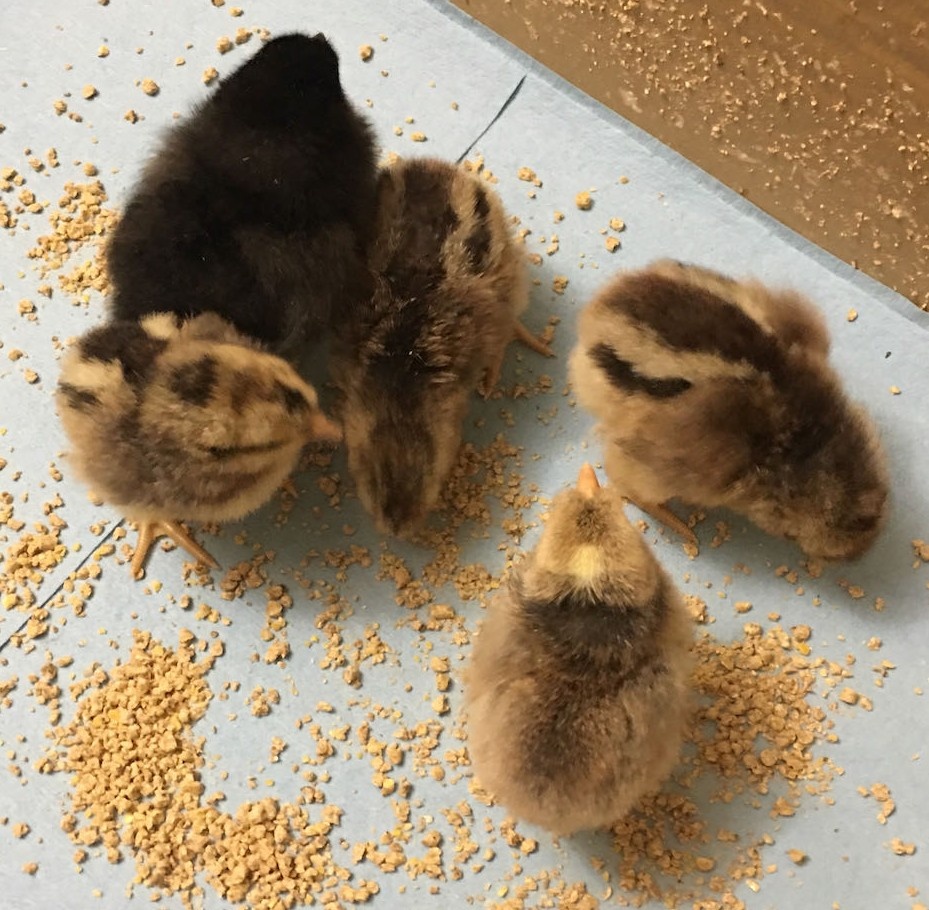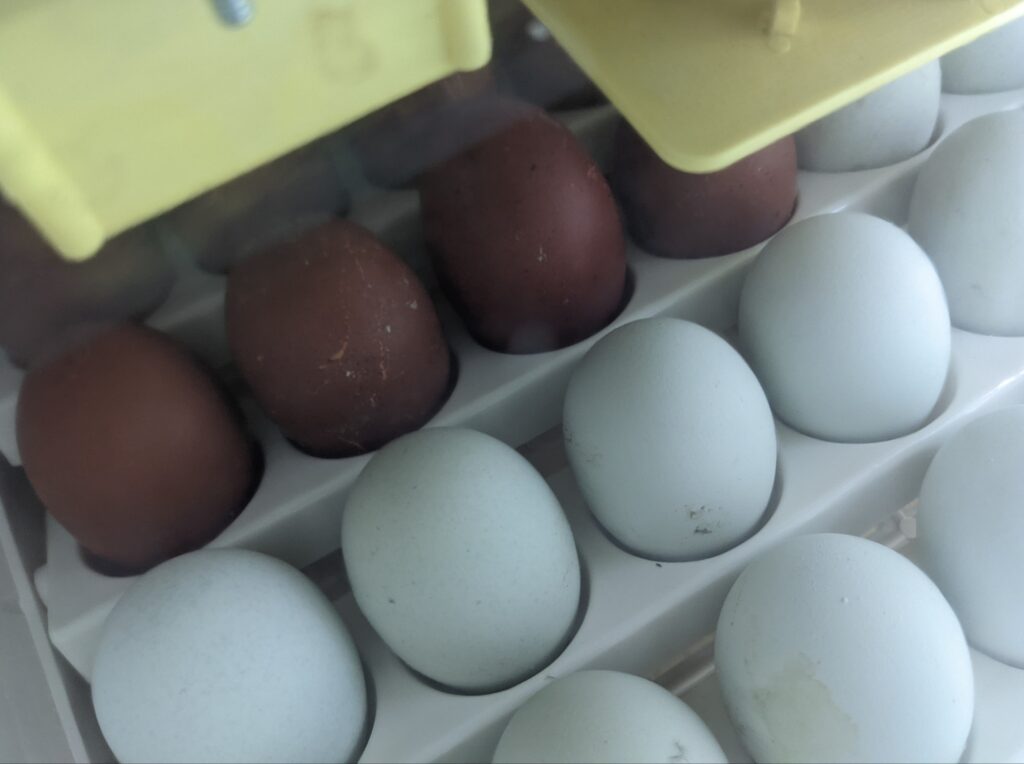
On Christmas Day, I filled an incubator with eggs from our flock: dark brown eggs from our Black Copper Marans and blue eggs from our Easter Eggers (hatching Olive Eggers). It’s been a couple of weeks now, so our first hatch of the year is just around the corner!
As I’ve gained experience incubating different types of poultry eggs over the years, I’ve come to believe that while it’s largely a scientific process, there’s also an element of art to it – like knowing the proper time to assist. While there are some clear signs that a chick may be in trouble in an egg (like pipping on the wrong end, a long pause between pipping and zipping, etc.), sometimes it’s important to consider a “gut” feeling, too. Going with my gut has saved more than a few chicks, especially those from shipping-damaged eggs.
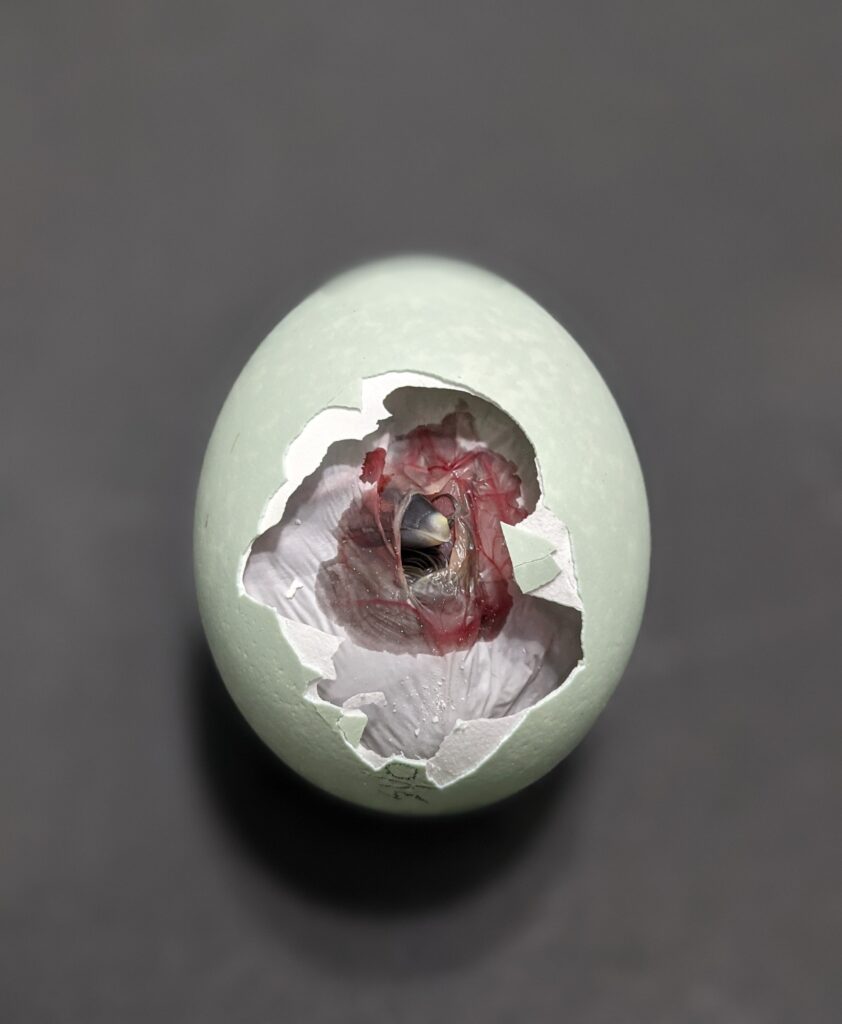
At this point in the incubation, the chicks are about 2/3 of the way to hatching. The eggs are mostly dark, full of well-developed chicks and active blood vessels (which are easily seen in the lighter eggs).
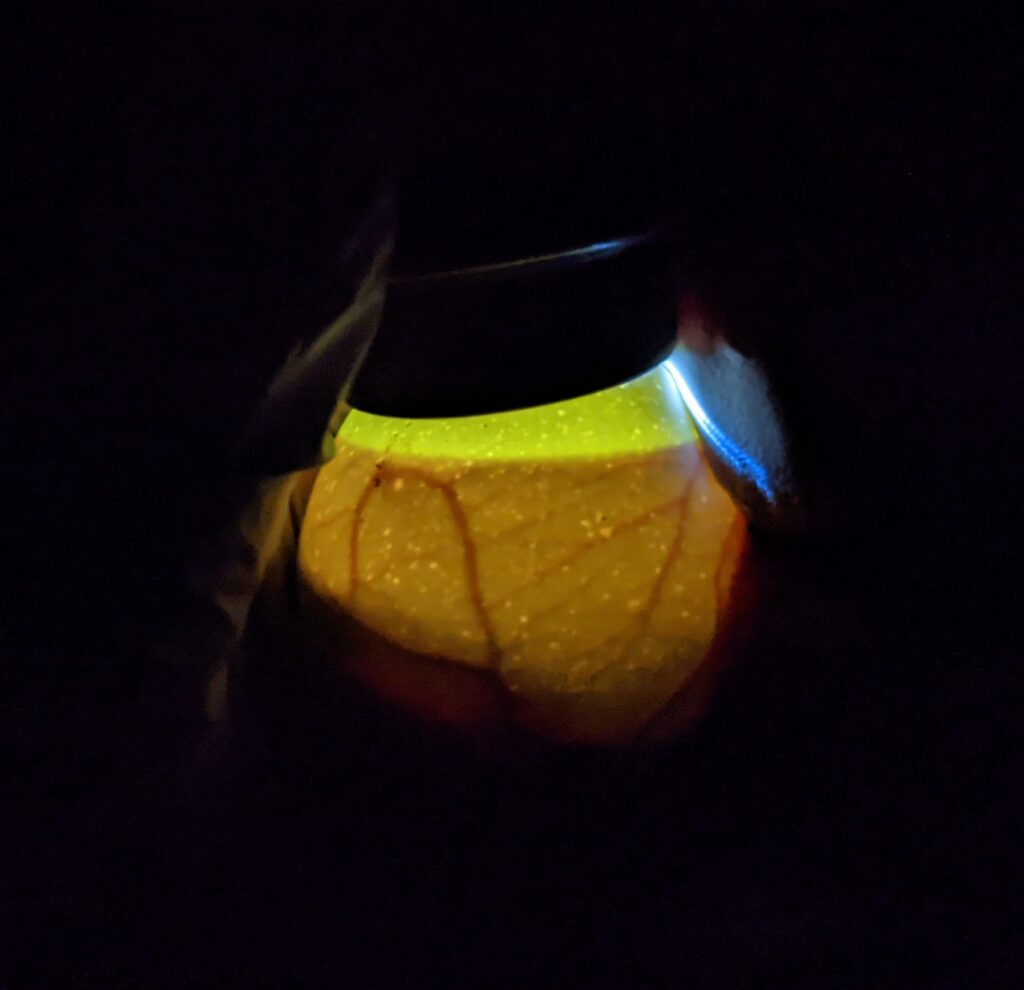
While it was difficult to see into the dark Marans eggs (even with a very bright candler), by this point, I’m better able to compare “iffy” eggs left in after the first candling to those that are developing properly. Fortunately, the majority appear to be progressing in their development.
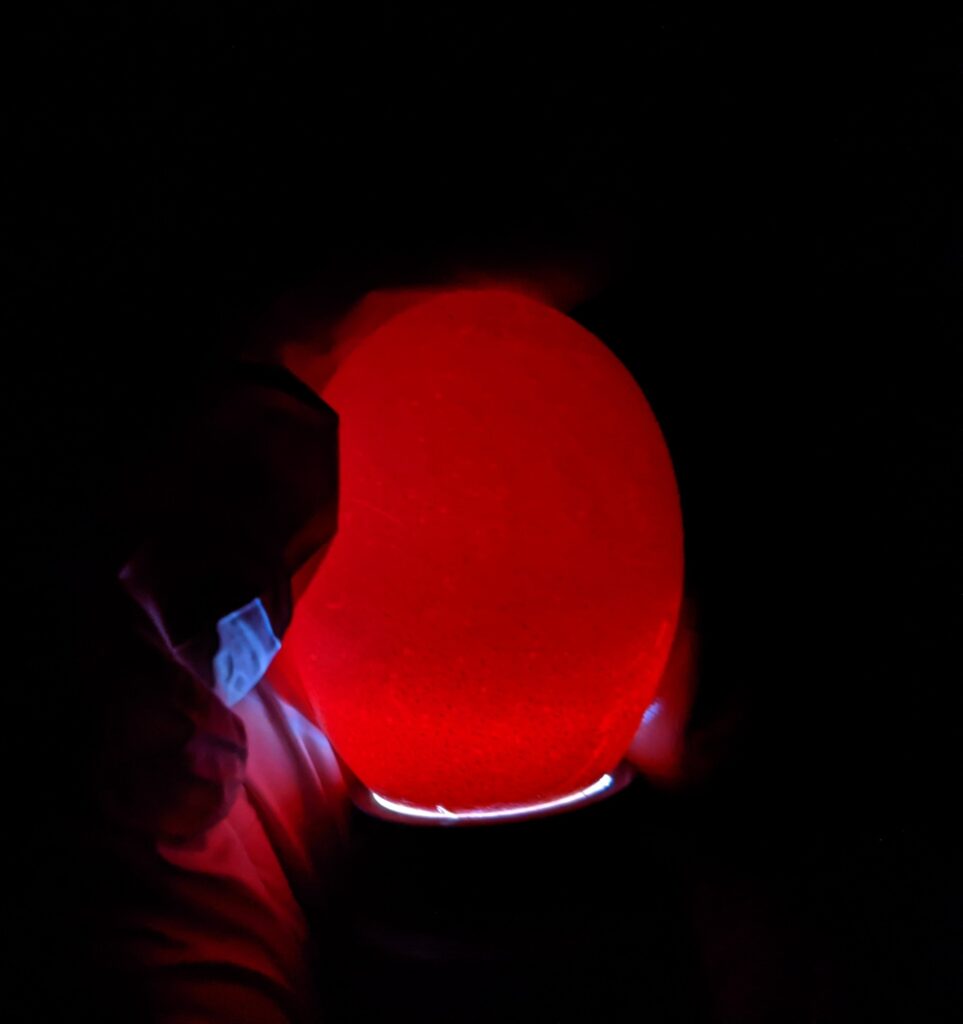
In a few days, I’ll move the eggs into hatchers for the last part of the process. The conditions in the hatcher (temperature and humidity) will remain the same as they were during incubation, except that once I see the first external pip, I’ll raise the humidity to facilitate hatching.
Why use a separate incubator as a hatcher? I like to use dedicated hatchers for the last leg of the incubation so that the post-hatch mess is restricted to these less-expensive (but effective) units; thorough cleaning after hatch can be tough on styrofoam incubators, and they may sometimes be damaged during the process. If I need to (eventually) replace a unit (or parts), I’d rather it be on the lower-cost model.
Once the first chicks emerge, I’ll be reminded, anew, of how truly awesome the incubation process really is and how incredibly precocious the tiny chicks – ready to run, eat, and drink right after the herculean ordeal of hatching – are. I will “prepare to be amazed” and look forward to many more hatches in 2022! 🪄
